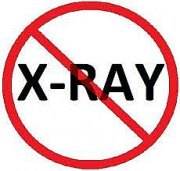Assessment for Subluxation Not Allowed: GCC Releases DRAFT Guidance on X-Ray in Chiropractic

The General Chiropractic Council (GCC), which is the regulatory body in the United Kingdom, has recently released a restrictive Draft Guideline on x-rays in chiropractic that does not allow for the taking of radiographs in the management of vertebral subluxation.
The GCC justifies its existence stating they ". . . ensure the safety of patients undergoing chiropractic treatment. We are an independent statutory body established by, and accountable to, Parliament to regulate the chiropractic profession. We protect the health and safety of the public."
In practice the GCC has historically acted as nothing more than a tool of the Subluxation Deniers that control the Chiropractic Cartel and exert its will among regulatory bodies around the world. The effort is designed to marginalize and eventually do away with the practice of managing vertebral subluxation in an evidence informed model in part by ignoring the evidence in support of objective, valid and reliable measures of components of vertebral subluxation.
The number one tool providing objective, valid and reliable measurement of the biomechanical component of vertebral subluxation is of course x-ray, so removing x-rays from the chiropractor's tool box has been a staple of the Deniers for many years and they have been largely successful at chipping away at its use.
The latest effort comes from the GCC which put together a group of so called "experts" that the GCC hand picked to draft guidance on the use of diagnostic imaging in chiropractic.
The GCC claims it is "inviting feedback on the draft guidance so that Council, at its meeting in December 2021, can consider making any changes prior to the publication of final guidance in early 2022."
The "experts" for the GCC include:
- Dr Julian Chakraverty MBChB: Consultant Musculoskeletal and Sports Radiologist, University Hospitals Bristol and Weston NHS Foundation Trust, British Society of Skeletal Radiologists
- Maria Murray: UK Radiation Protection Lead and Professional Officer for Scotland, Society and College of Radiographers
- Mark Gurden FRCC: President of the Royal College of Chiropractors. Registrant
- Inger Roug DC, DACBR, Pg. cert (Medical Ultrasound) FRCC, FHEA: AECC University College, Bournemouth. Registrant
- Laura Finucane: Consultant Physiotherapist FMACP FCSP, Sussex MSK Partnership
- Matthew Rogers: Bsc (Hons) Ost, MInstLM, MICB, Head of Policy at the Institute of Osteopathy
- Phil Yalden, Member of the General Chiropractic Council. Registrant.
The bias and pre-determined positions of the Royal College in terms of what constitutes acceptable chiropractic care is clear in regards to the management of vertebral subluxation. For example the Royal College already has a position statement on x-ray that does not allow for the taking of routine films to assess for subluxation.
The Royal College also has a position on the care of children citing a study by Parnell that stated only:
"Moderate-positive overall assessment was found for only 3 conditions in children: low back pain, pulled elbow, and premature infants."
Inger Roug, a DACBR who is also one of the "experts" for the GCC has expressed her disdain for the management of subluxation and the taking of x-rays by chiropractors publicly stating:
"But the guidelines are a result of a lot of chiropractors abusing the x-ray privilege, they simply take x-rays of anybody with a wallet and a beating heart."
When asked what her position is on the taking of x-rays for the biomechanical analysis of vertebral subluxation in the absence of symptoms or red flags Roug stated:
"If there are no symptoms why would the patient go see a chiropractor"
Julian Chakraverty lists 22 publications on Research Gate and not one of them has anything to do with vertebral subluxation. One paper of his on the reliability of motion palpation to determine levels of the spine needing "manipulation" showed:
"The results show that intersegmental motion testing is a relatively unreliable method of identifying the correct spinal level"
The Deniers demand that x-rays to objectively and reliably characterize the biomechanical components of subluxation are unnecessary and dangerous and want you to use unreliable and subjective methods instead. Make sense?
Mark Gurden FRCC, the President of the Royal College of Chiropractors seems to think the use of unreliable methods to determine when and where an adjustment is needed is just fine even though the literature does not agree with him since he states on his website:
"Chiro Health Chiropractors are specially trained to detect spinal joint dysfunction using precise palpation of the individual movements. Standard orthopaedic and neurological tests may also be used to reach a diagnosis"
We would love to see the validity and reliability of the "standard orthopaedic and neurological tests" he subjects his patients to.
The bottom line is that the rules of evidence apply to you but not to them and once again the Deniers running the Chiropractic Cartel have decided the answer to their questions ahead of time and they have chosen "experts" who are sure to give them exactly what they want.
Click on the links below to read their documents:

International Report
- Defending the use of Routine X-Rays in Chiropractic Care: A Public Health Imperative
- Addressing Misconceptions About Imaging: The Case for Routine and Repeat X-Rays in Chiropractic Care
- Those Who live in Glass Houses Shouldn’t Throw Stones: The Hidden Burden of Birth Trauma in Australia
- The Australian Chiropractic Board’s Ban on Infant Care: Weak Rebuttals Amidst Medical Bias
- Australian Chiropractic Board Reinstates Ban on Infant Care After Hysterics by Health Ministers













